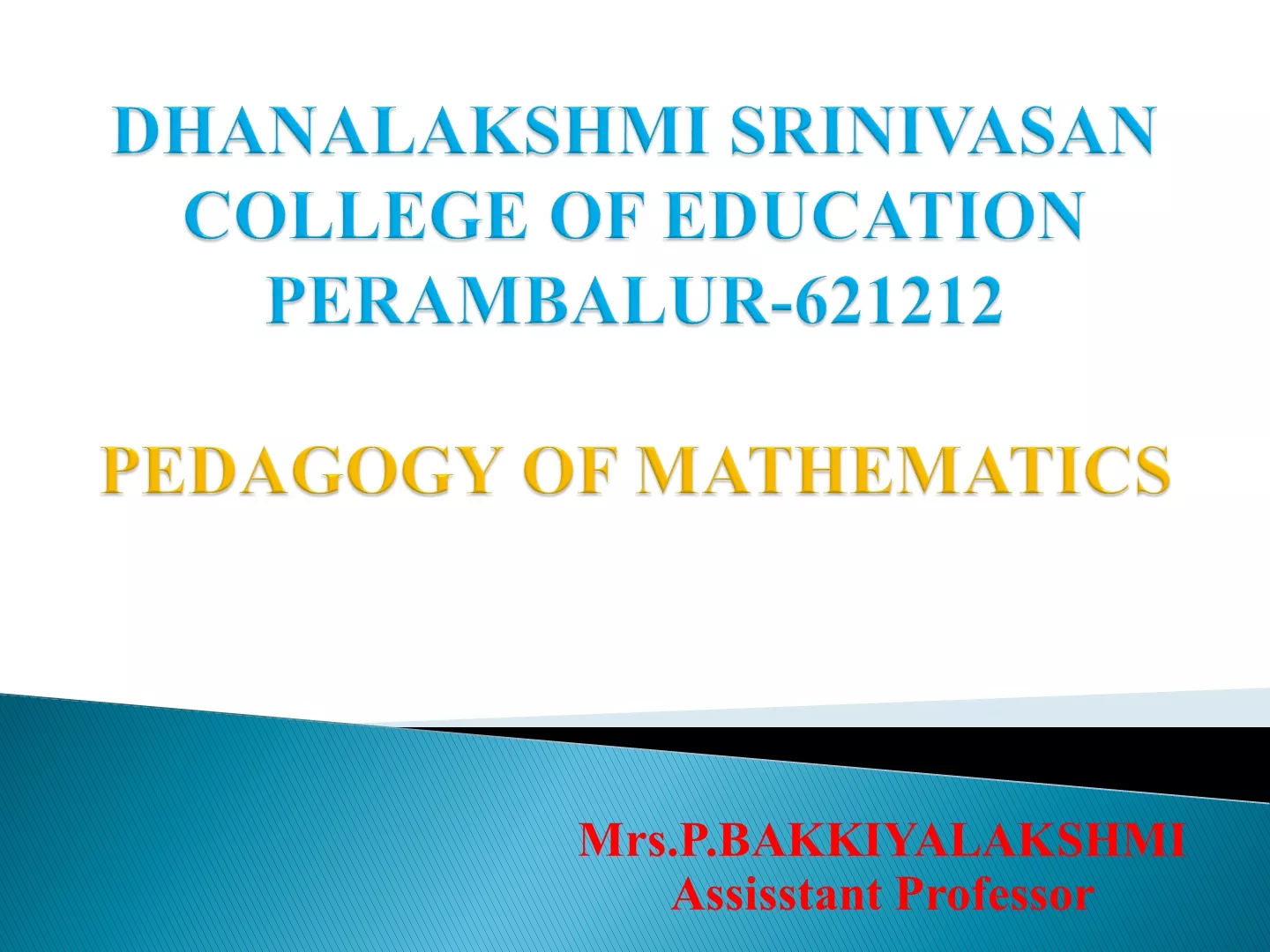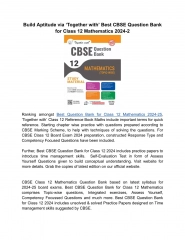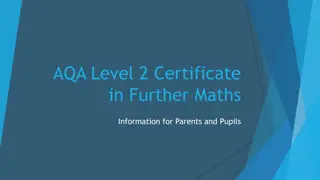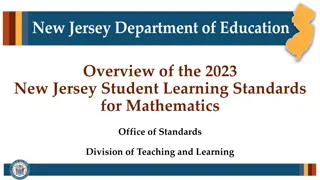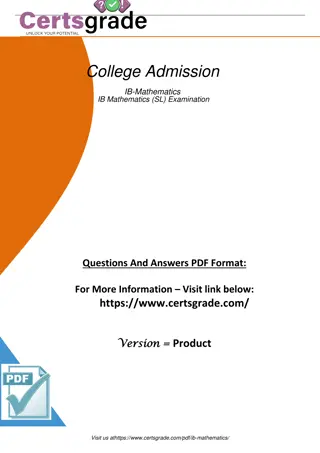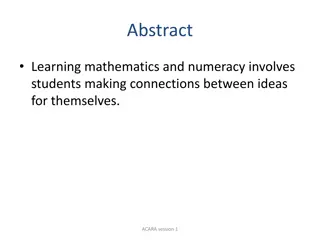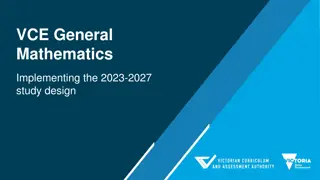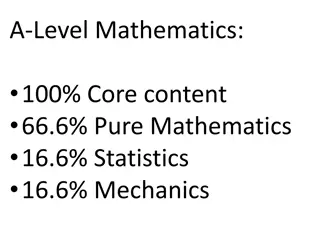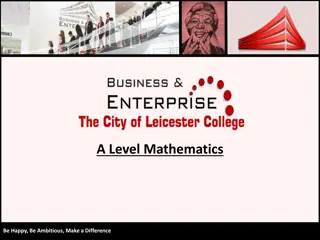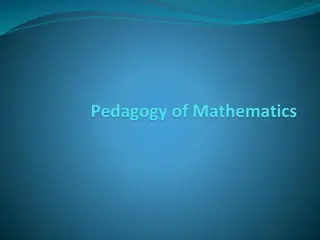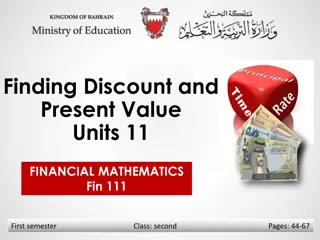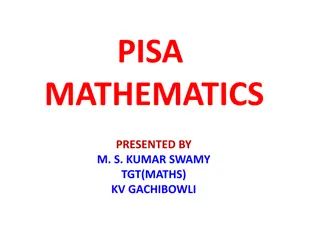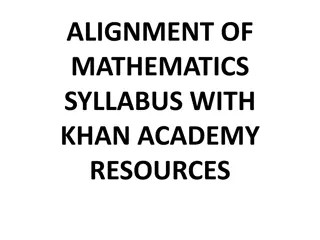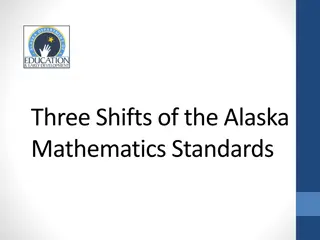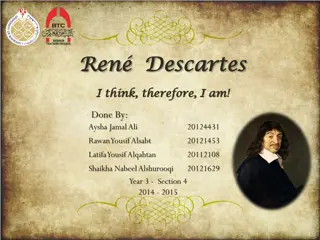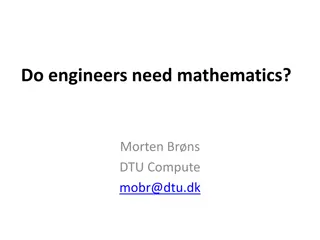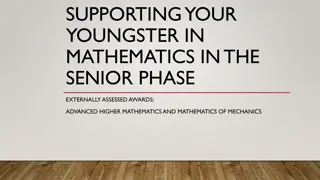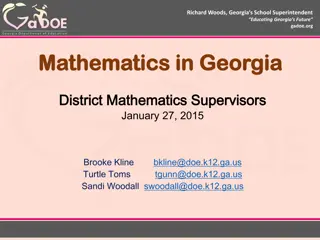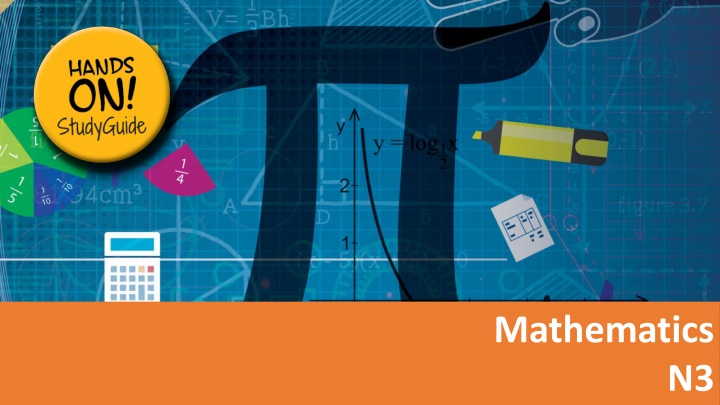
Factors, Fractions, and Exponents in Mathematics
Delve into the world of factors, fractions, and exponents in mathematics. Explore common factors, grouping, quadratic trinomials, the difference between two squares, cubic functions, algebraic fractions, exponents, and surds. Enhance your mathematical knowledge with practical examples and insights.
Download Presentation

Please find below an Image/Link to download the presentation.
The content on the website is provided AS IS for your information and personal use only. It may not be sold, licensed, or shared on other websites without obtaining consent from the author. If you encounter any issues during the download, it is possible that the publisher has removed the file from their server.
You are allowed to download the files provided on this website for personal or commercial use, subject to the condition that they are used lawfully. All files are the property of their respective owners.
The content on the website is provided AS IS for your information and personal use only. It may not be sold, licensed, or shared on other websites without obtaining consent from the author.
E N D
Presentation Transcript
Mathematics N3
Module 1: Factors and fractions COMMON FACTOR AND GROUPING Common factors are factors shared by two or more numbers. The common factor can be a variable, a number, or a combination of numbers and variables. An expression with more than three terms can be factorised by grouping the terms to find a common factor. For example, the expression 2?? 9?? 2?? + 9?? can be grouped to equal (? ?)(2? 9?) www.futuremanagers.com
Module 1: Factors and fractions (continued) THE QUADRATIC TRINOMIAL A quadratic trinomial is an expression with three terms containing a variable of degree 2, for example: ??2+ ?? + ? www.futuremanagers.com
Module 1: Factors and fractions (continued) THE DIERENCE BETWEEN TWO SQUARES The difference between two squares, such as ?2 ?2, can be identified as follows: The expression consists of two terms only; Both terms must be perfect squares; and There must be a minus between the two terms. www.futuremanagers.com
Module 1: Factors and fractions (continued) CUBIC FUNCTIONS ?(?) = ??3+ ??2+ ?? + ? is a function of the third degree, where ? 0. This is also called a cubic function. There must be a term with ?3 for the polynomial to be cubic (? 0), but ?, ? and ? can be equal to 0 (zero). www.futuremanagers.com
Module 1: Factors and fractions (continued) ALGEBRAIC FRACTIONS www.futuremanagers.com
Module 2: Exponents, surds and logarithms EXPONENTS An exponent is a mathematical way of representing a very large number or a very small number in a user-friendly format. It is basically a shorthand notation for multiplying the same number (the base) by itself several times. Example: This means that is raised to the power of 3. www.futuremanagers.com
Module 2: Exponents, surds and logarithms (continued) SURDS A surd is a square root of a whole number that produces an irrational number and cannot be written as decimal fractions. The square root of any prime number is a surd. For example: 3, 13 www.futuremanagers.com
Module 2: Exponents, surds and logarithms (continued) LOGARITHMS Logarithms are the opposite of exponentials. The logarithm of a number is the exponent by which another fixed value, the base, must be raised to produce that number. Therefore a logarithm is an unknown exponent that will be determined. For example: The logarithm of 100 to base 10 is 2, written as ???10100 = 2 www.futuremanagers.com
Module 3: Equations, word problems and manipulation of technical formulae EQUATIONS It is important to know that an equation has an equal sign. For example: 3? + 2(4 ?) = 16 In order to solve an equation, is must be kept balanced. What is done to one side of the equation, must be done exactly the same to the other side. www.futuremanagers.com
Module 3: Equations, word problems and manipulation of technical formulae (continued) WORD PROBLEMS When an answer is needed to a mathematical problem that is described in words as well as numbers, it is called a word problem. You find the solution by setting up an equation that represents the problem, and then solve it. www.futuremanagers.com
Module 3: Equations, word problems and manipulation of technical formulae (continued) MANIPULATION OF TECHNICAL FORMULAE (CHANGING THE SUBJECT OF A FORMULA) Manipulation of technical formula can also be described as changing the subject of the formula. An equation can be manipulated in such a way that the required variable is isolated on the left-hand-side, and everything else is written on the right- hand-side. This manipulation is described as making the wanted variable the subject of the formula. www.futuremanagers.com
Module 4: Geometry of coordinates STRAIGHT LINES A linear equation can be represented graphically by a straight line, for example: ? = 3? + 2, or ? = ?? + ? In a straight line equation: ? = gradient (slope) = ?????????? ?? ? ?????????? ?? ? www.futuremanagers.com
Module 5: Algebraic graphs SKETCH GRAPHS A graph is a diagram that shows either the relationship between some variable quantities, or the connections that exist between a set of points. These points are written as coordinates in relation to the ? and ? axis of the graph. In order to solve for the points, one can use the ? and ? intercepts: www.futuremanagers.com
Module 5: Algebraic graphs (continued) GRAPHIC SOLUTIONS When solving two equations simultaneously, look for the ordered number pairs, (?;?), that will satisfy both equations. (?; ?) is called the coordinates of the point(s) of intersection of the graphs. Simultaneous equations can be solved totally accurate by using the algebraic method. www.futuremanagers.com
Module 6: Differential calculus AVERAGE GRADIENT AND AVERAGE SPEED Gradient (slope) of a straight line: ? = ?? + ? In order to calculate the gradient (?) of a straight line that passes through two points (?1; ?1) and ?2; ?2 , calculate the change in the ? value between the two points and the change in the ? value between the same two points and then substitute the values into the formula for the gradient. Speed =???????? ???? www.futuremanagers.com
Module 6: Differential calculus (continued) LIMITS When working with limits, you investigate what happens to the ? value of a curve as you get closer to a specific ? value on a curve. For example: if you start walking towards a wall, the wall will be your limit. www.futuremanagers.com
Module 6: Differential calculus (continued) DIFFERENTIATION Differential calculus is the part of calculus concerning the rate at which a function is changing. The rules for differentiation are: www.futuremanagers.com
Module 7: Trigonometry EQUATIONS AND EXPRESSIONS For any angle ?: sec? =? ? sin? =? ? cot? =? ? ? ? cos? = 1 csc ? sin? = tan =? 1 co?? = ? ???? csc? =? 1 ???? = ? ???? www.futuremanagers.com
Module 7: Trigonometry (continued) GRAPHS In order to draw a trigonometric graph: Draw a graph by point- by-point plotting; and Draw the graph of ? = ?in? and know its characteristics. www.futuremanagers.com

